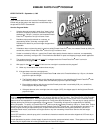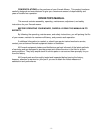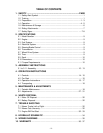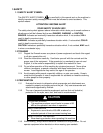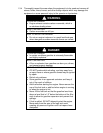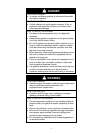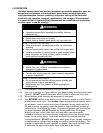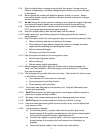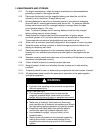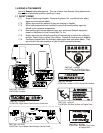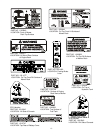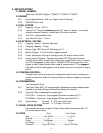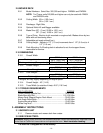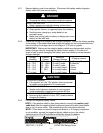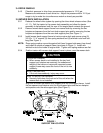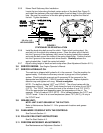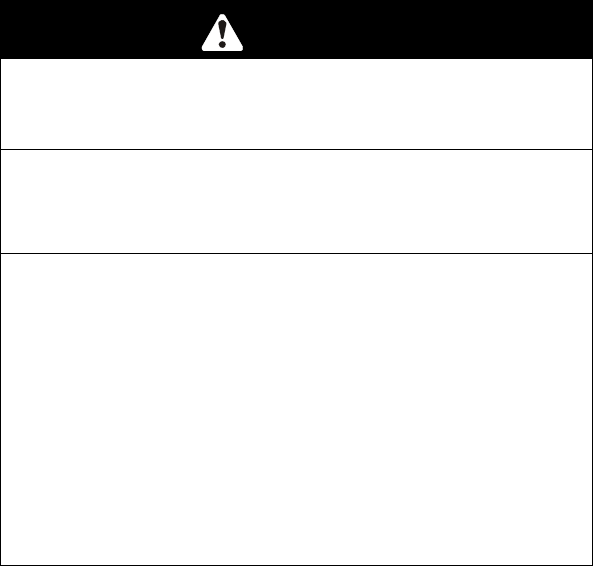
- 6 -
1.5 MAINTENANCE AND STORAGE
1.5.1 For engine maintenance, follow the engine manufacture’s recommendations
precisely as stated in the engine manual.
1.5.2 Disconnect the battery from the negative battery post when the unit will be
allowed to sit for more than 30 days without use.
1.5.3 Allowing batteries to stand for an extended period of time without recharging
them will result n reduced performance and service life. To preserve optimum
battery performance and life, recharge batteries in storage when the open
circuit voltage drops to 12.4 volts.
Note: To prevent damage due to freezing, battery should be fully charged
before putting away for winter storage.
1.5.4 Keep engine and engine area free from accumulation of grass, leaves,
excessive grease or oil, and other debris which can accumulate in these areas.
These materials can become combustible and may result in a fire.
1.5.5 Store fuel in a container specifically designed for this purpose in a cool, dry place.
1.5.6 Keep the mower and fuel container in locked storage to prevent children from
playing or tampering with them.
1.5.7 Gasoline powered equipment or fuel containers should not be stored in a
basement or any enclosed area where open pilot lights or heat appliances are
present.
1.5.8 Maximum mowing results and safety can only be achieved if the mower is properly
maintained and operated correctly.
1.5.9 Check all bolts frequently to maintain proper tightness.
1.5.10 Keep all guards, shields, and all safety devices in place and in safe working
condition.
1.5.11 Frequently check for worn or deteriorating components that could create a hazard.
1.5.12 All replacement parts must be the same as or equivalent to the parts supplied
as original equipment.
WARNING
POTENTIAL HAZARD
♦ Hydraulic fluid escaping under pressure can penetrate
skin and cause injury.
WHAT CAN HAPPEN
♦ Fluid accidentally injected into the skin must be
surgically removed within a few hours by a doctor
familiar with this form of injury or gangrene may result.
HOW TO AVOID THE HAZARD
♦ Make sure all hydraulic fluid hoses and lines are in
good condition an all hydraulic connections and fittings
are tight before applying pressure to hydraulic system.
♦ Keep body and hands away from pinhole leaks or
nozzles that eject high pressure hydraulic fluid.
♦ Use cardboard or paper, not your hands, to find
hydraulic leaks.
♦ Safely relieve all pressure in the hydraulic system by
locking drive levers in neutral and shutting off the
engine before performing any work on the hydraulic
system.



